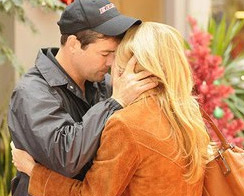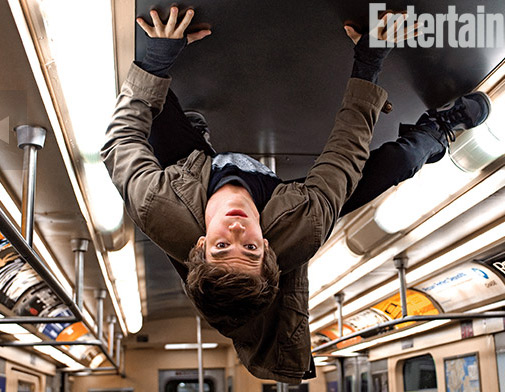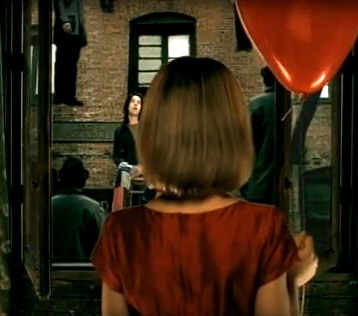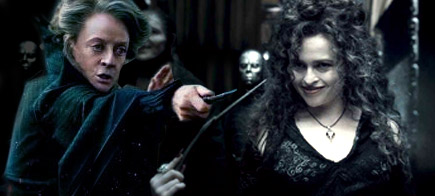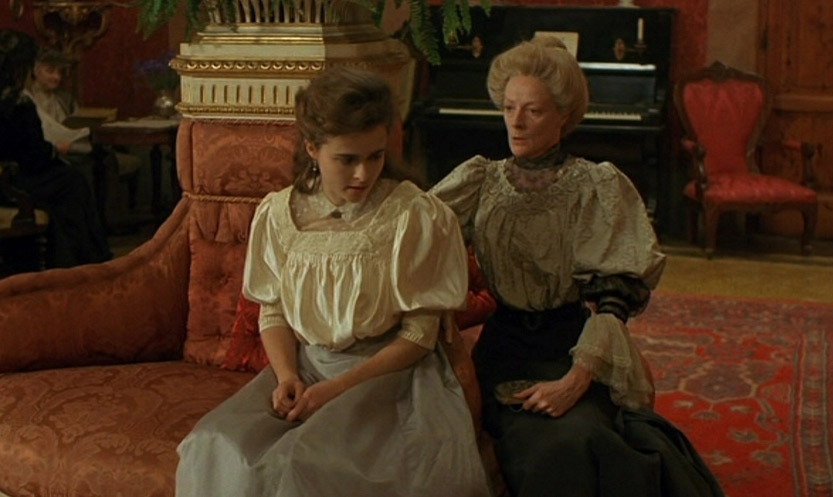Yes, No, Maybe So: Hugo
 Saturday, July 16, 2011 at 7:08PM
Saturday, July 16, 2011 at 7:08PM Robert (author of Distant Relatives) here. If you, like me, have been wondering how the phrases "Martin Scorsese" and "family-friendly holiday season event film" could possibly fit together ever since the announcement of The Invention of Hugo Cabret...
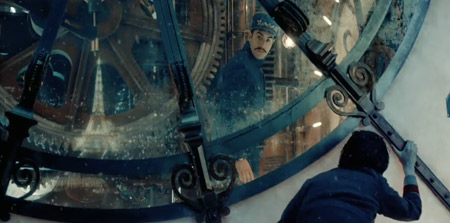
...later shortened to Hugo Cabret, later shortened to Hugo (by the time the film hits theaters in November it may just be H.) the newly released trailer may answer your questions, though not necessarily satisfactorily, and may leave you with all new ones. Let's discuss.
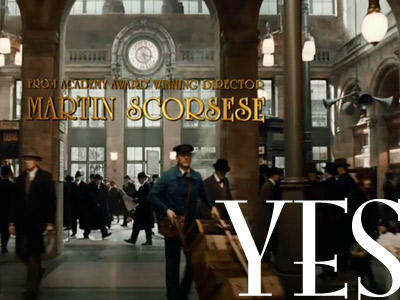 The name Martin Scorsese was, is, and will continue to be the selling point behind this film, at least for cinephiles who consider each new Scorsese film an event. But the trailer here has definitely been cut for the kind of mass audience that doesn't flock to Scorsese in droves. If you're looking for something non-threatening enough for the kids, but well crafted enough for adults, this trailer is targeting you. And in that sense the trailer does have something of an "instant holiday classic" feel to it. Not to mention some possibly impressive production design by Dante Feretti that could get him noticed again after his Shutter Island snub last season.
The name Martin Scorsese was, is, and will continue to be the selling point behind this film, at least for cinephiles who consider each new Scorsese film an event. But the trailer here has definitely been cut for the kind of mass audience that doesn't flock to Scorsese in droves. If you're looking for something non-threatening enough for the kids, but well crafted enough for adults, this trailer is targeting you. And in that sense the trailer does have something of an "instant holiday classic" feel to it. Not to mention some possibly impressive production design by Dante Feretti that could get him noticed again after his Shutter Island snub last season.
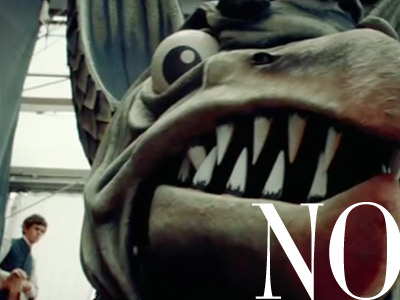 Yet while the production design appears promising, there's always the possibility that this busy-looking film will be a gold and teal nightmare. The 3D cinematography is rife with things flying at the camera. In this trailer alone we count at least five: Sacha Baron Cohen's hand, a dog, dragon smoke, a key necklace, and Hugo's hand. (So help me if that scene of Hugo going down a big fun slide is accompanied with a POV shot) Barring the title card there's not much here that feels Scorsese. Sure it's off his genre, but even when he does go off genre, Scorsese explores the same general themes and ideas (once calling The Age of Innocence his most violent picture). So even the slightest hint of a Scorsese touch, like the presence of Ray Winstone, was welcome, though I wanted to shout "No Hugo! Don't go with Mr. French!"
Yet while the production design appears promising, there's always the possibility that this busy-looking film will be a gold and teal nightmare. The 3D cinematography is rife with things flying at the camera. In this trailer alone we count at least five: Sacha Baron Cohen's hand, a dog, dragon smoke, a key necklace, and Hugo's hand. (So help me if that scene of Hugo going down a big fun slide is accompanied with a POV shot) Barring the title card there's not much here that feels Scorsese. Sure it's off his genre, but even when he does go off genre, Scorsese explores the same general themes and ideas (once calling The Age of Innocence his most violent picture). So even the slightest hint of a Scorsese touch, like the presence of Ray Winstone, was welcome, though I wanted to shout "No Hugo! Don't go with Mr. French!"
So what is Scorsese doing? Pilling up money for his next project? An academic exercise in trying something new?
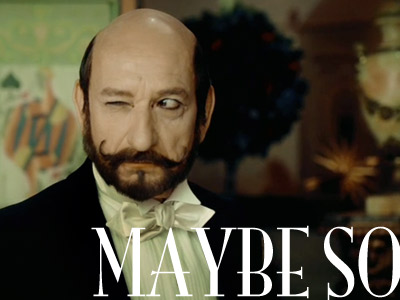 Actually what he's doing is a family-friendly holiday season event film in exactly the way Scorsese would do it. Scorsese was never going to do fantasy in the mold of something modern. His films always reference back to the classics. Even Shutter Island disappointed many by possessing the obviousness of an old melodramatic Hammer Horror film instead of something that felt new. But that's what he does. Something tells me that what interested Scorsese in this project was the potential to make an homage to Georges Méliès (played by Ben Kingsley) and the films that birthed the fantasy genre. And those films were indeed intentionally artificial and filled with gimmicks.
Actually what he's doing is a family-friendly holiday season event film in exactly the way Scorsese would do it. Scorsese was never going to do fantasy in the mold of something modern. His films always reference back to the classics. Even Shutter Island disappointed many by possessing the obviousness of an old melodramatic Hammer Horror film instead of something that felt new. But that's what he does. Something tells me that what interested Scorsese in this project was the potential to make an homage to Georges Méliès (played by Ben Kingsley) and the films that birthed the fantasy genre. And those films were indeed intentionally artificial and filled with gimmicks.
So maybe we can't fault Scorsese for inconsistency of vision. We may want Scorsese to be modern and inventive. We may want him to wow us with spectacle like Peter Jackson or Christopher Nolan. But that's the fault of our expectation. What Scorsese clearly wants to do is recreate the magic of the old days. Whether or not you end up liking Hugo may depend on whether you appreciate the note on which the trailer ends, a recreation of the Lumiere's brother's L'arrivée d'un train à La Ciotat this time with the train actually pummelling toward the audience... in 3D.




